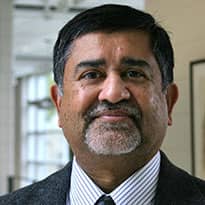When a story is incomplete it can distract the attention of the audience and even discredit the storyteller. Our brains seek clear patterns, and if parts of a picture are missing, it compensates by adding its own colors and shapes to make it whole. In the story of Jaggi Vasudev, now Sadhguru, I wondered about the missing parts: what was his life like growing up in Mysore? When and whom did he marry, and where are the nuggets from his spouse's life in the chain of events in his life? And how did Jaggi Vasudev become the widely traveled and influential Sadhguru from the relatively unknown young man he was, riding fast motorbikes in a sleepy town in South India?
A reader of my essay reminded me that there is indeed a book that deals with these matters and more, and that I better read it. But for such a reminder I might have postponed buying a copy of Arundhathi Subramaniam's book, Sadhguru: More than a Life and I would have denied myself or delayed the opportunity of mulling over the contents of a fascinating tale, well told.
In India, even good journalists end up writing hagiographies of political leaders, industrial magnates, and of course, gurus and godmen. I wondered therefore if Subramaniam, a well-known poet, would be bringing her aesthete's fine-pointed pen to pry open the layers of the mundane and the esoteric in Jaggi Vasudev's life or wield merely a felt-tipped marker to broad-brush the man's life as would a mere fan and a "disciple." While there are a couple of sections in the book, including the one on the creation of the "Dhyanalinga," where the narrative feels gauzy and the details amorphous, overall it is a story of an extraordinary man very well told.
But this begs the question: what would draw a poet of Arundhathi's caliber to cast her critical gaze on a man like Jaggi Vasudev? (Warning: readers should not confuse Arundhathi Subramaniam with Arundhati Roy, the more well-known, self-promoting, radical activist/author of The God of Small Things). Poets, especially talented poets, writing in English in India, have big egos, carry a satchel full of suspicions about the traditional and the local, and more importantly know what not to write about if they are to be noticed in the English-speaking/publishing world. And if they are to be invited by universities abroad to read, write, and mesmerize they better write what is agreeable to such a clientele: you cannot be writing about gurus, except as a category of seductive charlatans, beguiling conmen, or religious bigots.
It is therefore a truly surprising and courageous effort by Subramaniam to listen to the life story of a Godman, and narrate it celebratorily, sympathetically, even in wide-eyed wonder. But there may have been a price to pay, for one can't find a thoughtful, detailed, critical review of this book, published in 2010, in any of India's newspapers and magazines that have otherwise acknowledged her wiles and skills as a poet. That, of course, is a reminder of and a commentary on the deracination of the English-speaking, urbanized, Westernized, and secularized Indians for whom religion and spirituality, especially of the Hindu kind, cannot be touched, or seen to be touched, at least in public with anything but disapprobation. They may have their superstitions, their chosen gods, their moments of clutching of deities in times of despair, or even a surreptitiously visited family astrologer, but for these fancy pants, the Shiva linga is a phallus symbol, and India's saints and sages nothing but old, boring tropes in the Hindu hinterland.
Of course, even Subramaniam and the Sadhguru play safe in India's messy religious landscape, with Subramaniam expressing doubts about, if not contempt of Hindu temples, Brahmins, and rituals. Such simplistic and safe asides are now perfunctory in the secular/progressive Indian world. Nothing of Gods and conmen, let alone the violence and fetishism in the world of Christians, Sikhs, Muslims, and Buddhists find mention in the talks of the Sadhguru or the writings of his biographer, which is rather worrisome. The Sadhguru too is dismissive of Hindu priests, rituals, temples, and customs. But he is mum about the rest of the world's religions and religious inclinations. We will have to let that be, for now.
Instead, it is curious to look at what took Arundhathi to the Sadhguru. A four-minute publicity video for the book gives some insight, but one has to read the book to gather the reasons for this effort of a kind of spiritual love and longing. And if the quest for God or for spiritual succor is an illness that only a few are afflicted with, then it is good that among those are good writers and poets. "I thought gurus happened to other people," writes Arundhathi, specially identifying middle-class Indian men and their "docile, status quoist" wives. But she should know that in India, as elsewhere, it is the vast masses of the poor, and especially women, who flock to temples, mandirs, and mosques, and who raise their hands and shout "hallelujah" on Sunday mornings in churches—small and mega—even in these United States of America. The poor have an affinity for God, and those who promise them a "showing" get their attention and alas, also a lot of their money. The Benny Hinns of the West, with their touring circuses, well-muscled security men, loudspeakers the size of trucks, and strobe lights with multi-million wattage travel the world preying upon the innocent and needy, while their Indian counterparts, whose shows have very little production value comparatively, draw even larger crowds with similar promises of heaven, goodness, and the grace of God. But even in India, the land of snake charmers and God charmers, the likes of Sadhguru are rather rare. And they don't usually attract the attention of "contemporary urban women" like Arundhathi Subramaniam.





